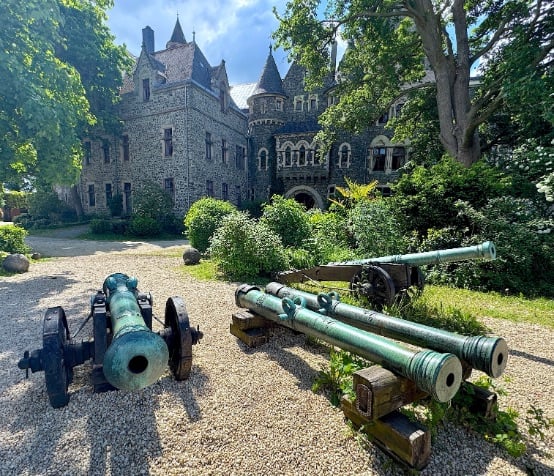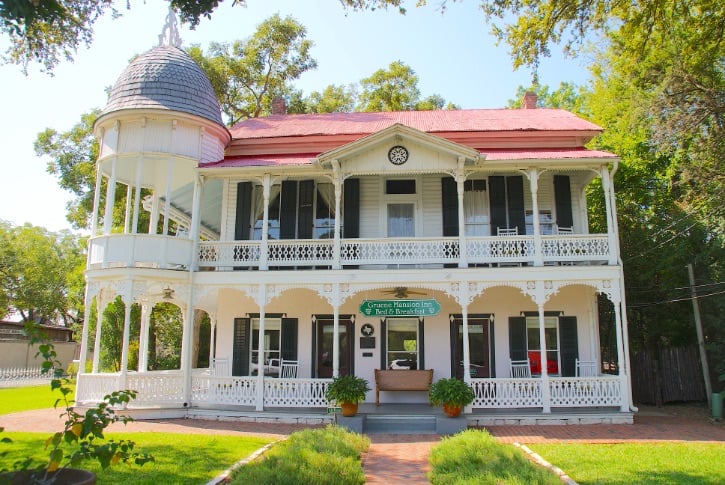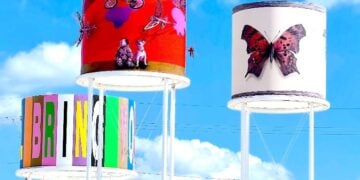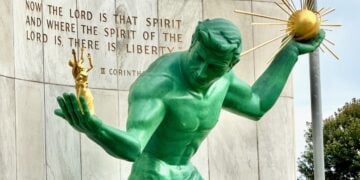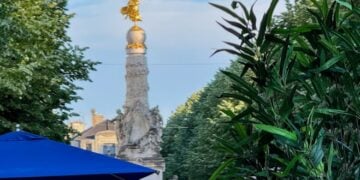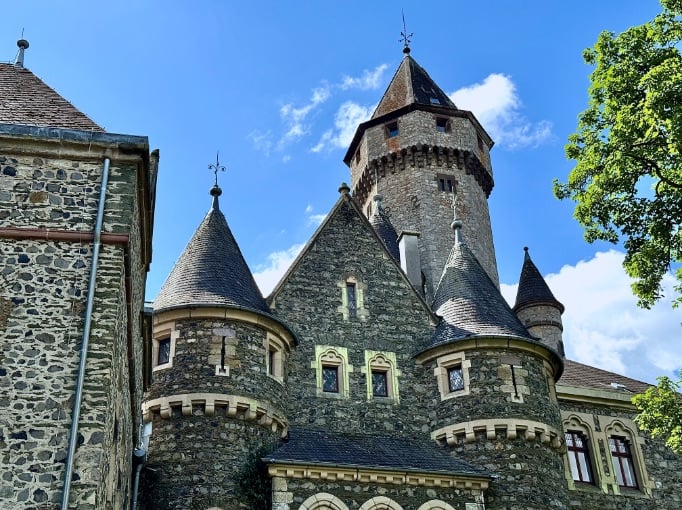New Braunfels, Texas
As a native Texan, I have traveled through and spent a lot of time in the friendly town of New Braunfels (see my article on New Braunfels), nestled on the eastern edge of the spectacular Texas Hill Country. To millions of locals and visitors, New Braunfels has long been seen as the heart of German heritage, inner tube rides on the Guadalupe, craft beer, German food, and Wurstfest celebrations. We also enjoyed fun-filled time in Amsterdam, Reims, Epernay, and Paris on our 17 day adventure in Europe.
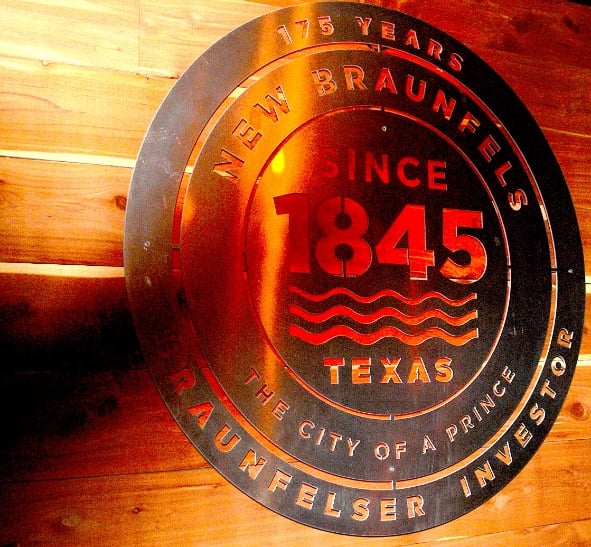
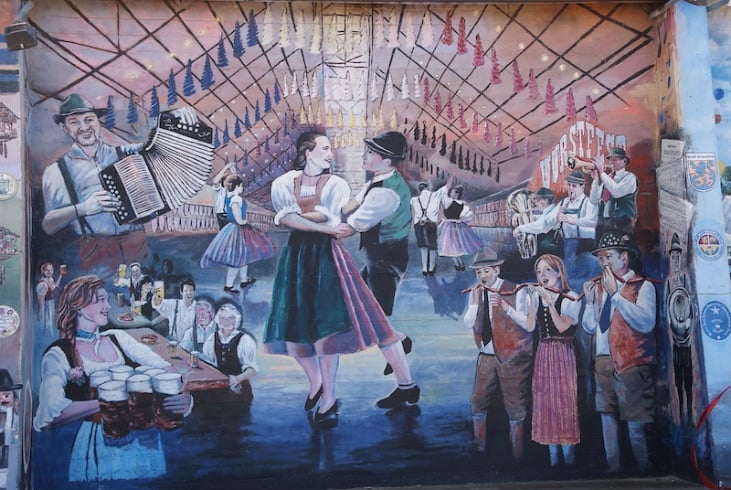
In the center of town is the Prince Solms Community Park. It is a hugely popular 19.1-acre park nestled along the scenic Comal River in New Braunfels, Texas, adjacent to the number one water park in the world, Schlitterbahn. The park is named after Prince Carl of Solms-Braunfels of Germany, the city’s founder.
New Braunfels, Texas, and Braunfels, Germany, are officially sister cities, formalizing a cultural exchange that dates back to 1925. In 2015, the mayor of New Braunfels issued a proclamation establishing March 21 as Founders Day, noting the special connection of New Braunfels with Braunfels.
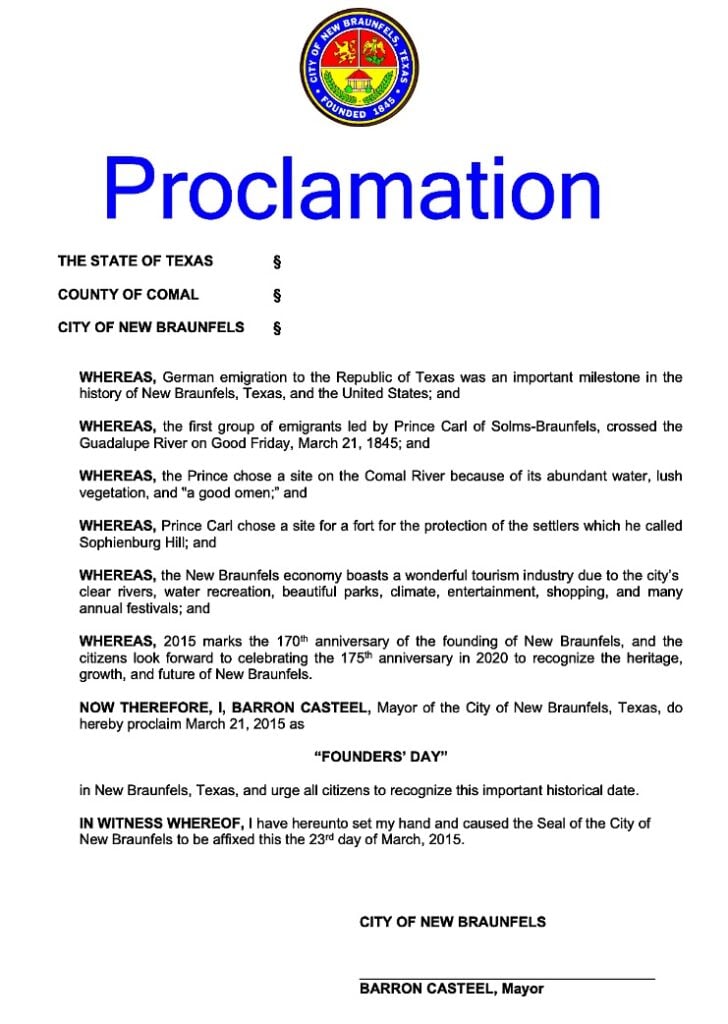
Braunfels, Germany
In May my wife and I planned to go to Europe for 17 days, visiting Amsterdam, Germany, Reims, Epernay, and Paris. We have a niece who lives an hour north of Frankfurt, and made arrangements to visit her and her family for four days after leaving Amsterdam. In my discussions with my niece and my online research, I noticed the small town of Braunfels about half an hour from her home.
The name Braunfels was obviously recognizable to me, and I wondered if it had anything to do with the New Braunfels in Texas. A quick google search indicated that, yes, New Braunfels was founded by Prince Carl of Solms-Braunfels. We made plans with our niece to visit the town and magnificent castle that sits at the top of a hill overlooking the surrounding landscape.
In 1845, settlers who founded New Braunfels under the auspices of the Adelsverein traveled over 5,000 miles from Germany to the an area of Texas they named New Braunfels, in honor of Prince Carl of Solms-Braunfels. The huge German influence can still be found in New Braunfels as well as other German towns like Fredericksburg, Boerne, Schulenburg, and others.
Braunfels Castle
We followed the winding road up to the hilltop and found the amazing medieval-Gothic Schloss Braunfels. Founded in the 13th century to protect against neighboring invaders, the castle has undergone several reconstructions and modifications through the years. Additions by Prince Ferdinand in 1840 and Prince Georg in 1880 complete the picturesque fairytale look of today.
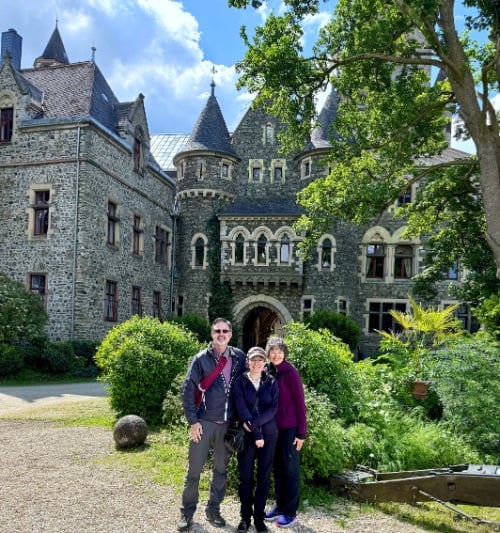
Our wonderful English speaking guide took us through many of the castle rooms and the grounds. Rooms included Knight’s Hall, a grand hall showcasing medieval weaponry and armor, and the Altenberg Rooms, with a variety of sacred artifacts, including the Gothic Altenberg Altar from the early 14th century. We found the Dieker Gallery (Hunting Room) intriguing, with many paintings of deer, wild boar, and outdoor scenes. Each room had a unique style, décor, and artwork to follow its theme.
Amazing Views from this Hilltop Fortification
I loved walking the grounds with its 360-degree views of the valleys below. Several cannons lie ready along the fortified walls, where narrow slits in the mortar provided soldiers with a view of approaching enemies. The north-facing battlement terrace offers sweeping views over the old town and the expansive Lahn valley.
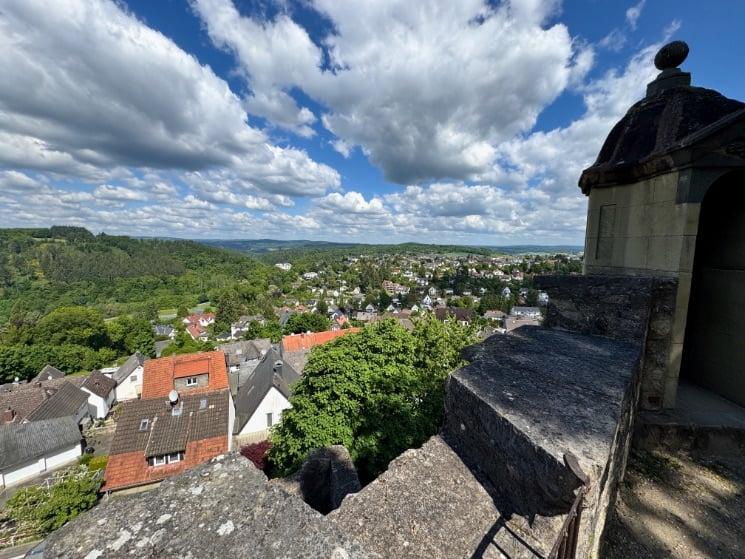
The Schlosskirche (Castle Church)
The Schlosskirche (Castle Church) at Schloss Braunfels is a remarkable example of late Gothic architecture, rich in history and artistic detail. Dedicated to Saint Gall, wooden carvings representing the Stations of the Cross line the left wall. The current structure was built between 1491 and 1501 by Count Otto II of Solms, who replaced the earlier chapel with a new church in the late Gothic style.
Guided tours are offered on a regular basis in German. For English speaking tours, contact the castle directly to make arrangements.
Princely Family Museum
A separate self-guided tour on the grounds, Princely Family Museum, can be accessed for an entrance fee of 4 euros (or 2 euro if you already purchased a castle tour). Guests can view special collection items from the counts and countesses as well as the princes and princesses according to your own taste and interests.
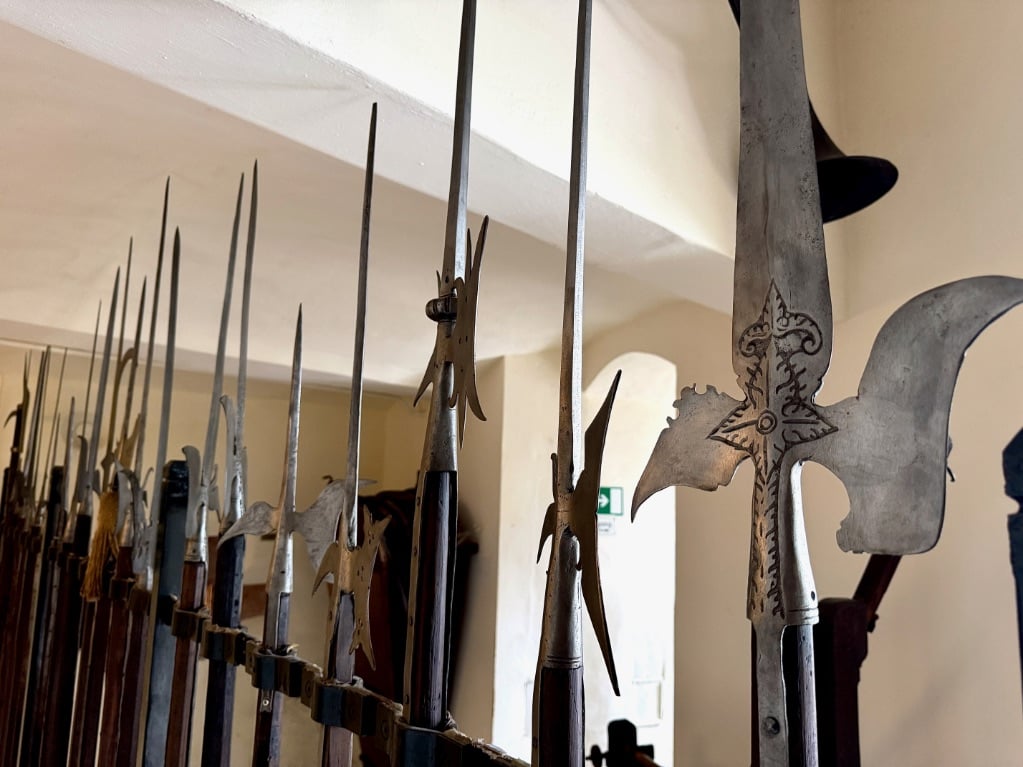
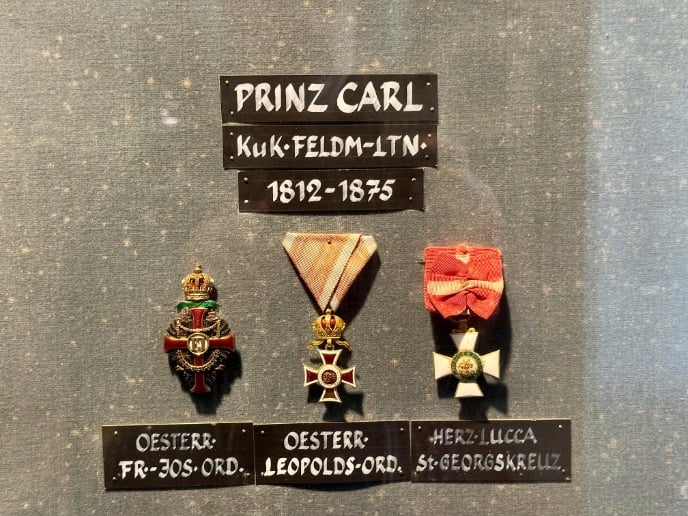
A variety of weapons like lances, halberds, duel pistols, bayonets, ceremonial weapons, and the hunting equipment of Prince Ferdinand (1797-1873) can be seen here. An interesting document in the Princely Family Museum is the emperial letter from 1742, in which the Emperor Karl VII granted Count Friedrich of Solms-Braunfels the rank of prince. There are also various military uniforms, including the uniform of Count Heinrich Trajektin (1638-1693), which he wore in his last battle.
Other items include coins from different lines of the Solms family and from the German empire. Bohemian art glass, gowns of princesses, intricate jewelry, medals, and ironworks are also exhibited. The museum even has a display of prehistoric fossils and findings from the 1800s.
Kleines Café in Braunfels
After our interesting tour of Schloss Braunfels, we walked the short distance down to the main square. Several attractive buidings, shops, and restaurants lined the square. It was lunchtime, so we poked our head in one promising establishment, and were pleasantly surprised by what we saw. We all agreed to go inside to Kleines Café and Markt, and had a seat in the beautifully decorated dining room.
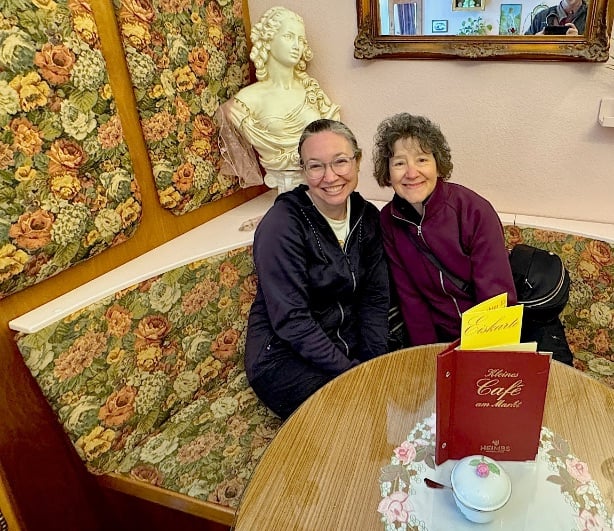
A friendly server greeted us, and we perused the small but delightful menu. The café offered a nice selection of coffees and teas, egg dishes, salads, soup, and desserts. We agreed a bowl of goulash and a cup of hot tea sounded good, so we ordered and chatted about our day at the castle. I highly recommend Kleines Café for a morning or afternoon break.
Saalburg Roman Fort on the Limes
The next day we decided to visit the nearby Saalburg Fort. Part of a UNESCO World Heritage Site, The Saalburg Roman Fort is a meticulously reconstructed Roman military fortification located near Bad Homburg in Hesse, Germany. It is the most complete reconstruction of a Roman fort in the country and provides a fascinating insight into the period of the Roman Empire’s frontier defense system. The fort was strategically located on the Taurus mountain ridge, and the Saalburg Pass was a vital passage into Germanic territories. After the fall of the Limes around 260 the fort was abandoned and used as a quarry. In the early 1900s, Kaiser Wilhelm II inititated reconstruction of the large complex that exists today.
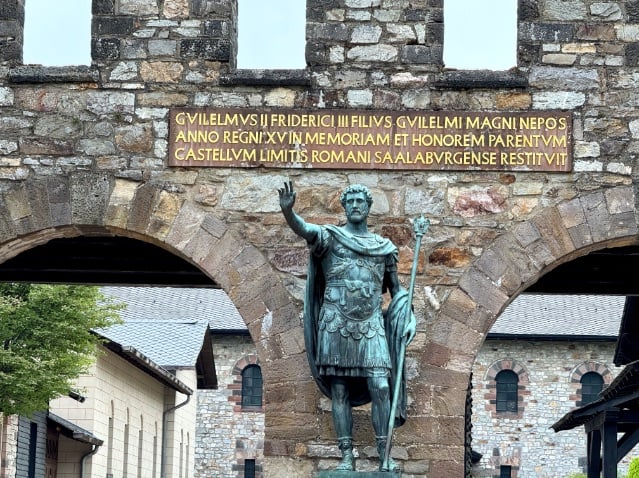
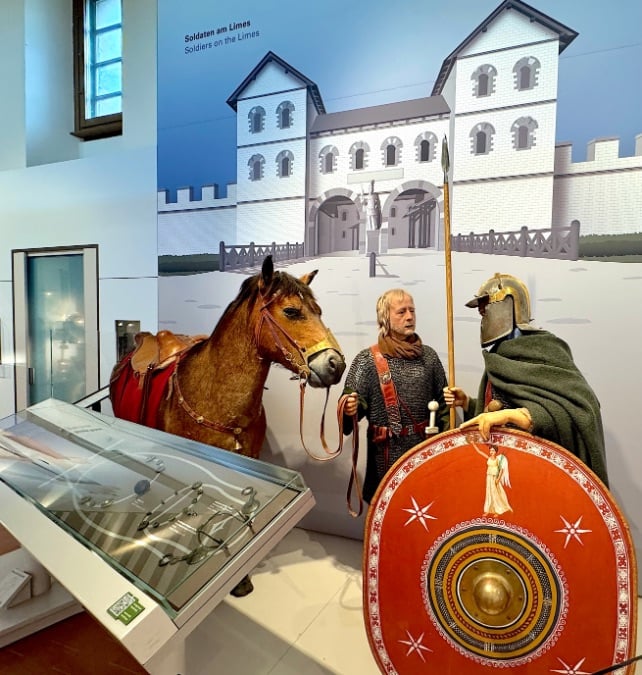
After seeing samples of how early settlers made weapons, tools and jewelry from bones, my grand-niece, grand-nephew, and I each made our own piece of bone jewelry. We filed the edges smooth and added some simple designs to the bone, each ending up with a prized souvenir to bring home from Saalburg Fort. We all enjoyed our comprehensive glimpse into Roman military architecture and frontier life at the amazing Saalburg Fort.
Realizing the Connection Between New Braunfels, Texas and Braunfels, Germany
We had such a great time visiting Braunfels and the Saalburg Fort. Less than an hour from Frankfurt, both places provide an educational and enjoyable glimpse into the past of this beautiful area of Germany. Next time I visit New Braunfels in Texas, I’ll look back on this illuminating visit to its sister city in the old country.
